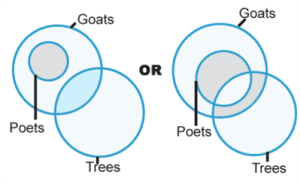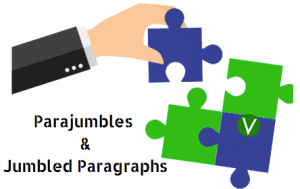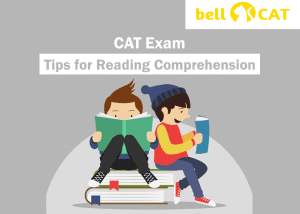Parts of Speech were the first thing we were taught after the English Alphabet and one-letter words back in the days when we were in still primary school. Nostalgic, much? Who would’ve thought that you’d have to again come back to these fundamentals for one of the toughest MBA entrance exams?
Parts of speech and its related types will help you solve grammar-based questions in the CAT exam. Not only that, but also in questions that ask you to point out any blunders, change the sentence to fit a voice, fill in the blanks with suitable words and many more. In conclusion, having a good grasp on the concepts of grammar will benefit you in the VARC Section of the exam immensely.
A heads-up before we dive in, though. Not all the words are what they seem.
Parts of Speech:
1. Verb
2. Noun
3. Pronouns
4. Prepositions
5. Adjectives
6. Adverbs
7. Conjunctions
8. Interjections
1. Verb
This type of words are the most important parts of a sentence. How does a sentence even make sense without an action word of some sort? Verbs are the “doing” words or action words in the sentences.
Examples:
- He is preparing for the CAT Exam. (“is preparing” describes an action in play.)
- She writes every day. (“writes” is an action word here)
- She missed her flight. (Here, “missed” is the key word.)
The above examples are clear, but verbs are not always apparent in a sentence, depending on the type of verb they are. There are three types of verbs: transitive, intransitive, and helping verbs.
Transitive Verbs are the ones which are followed by a direct object whereas Intransitive Verbs are not followed by a direct object.
Take the above examples for instance. The second sentence’s verb, “writes”, is an intransitive verb. There is no object in the sentence after it. The third sentence’s verb, “missed”, is followed by an object, her flight. These are the basic differences between Transitive and Intransitive words.
Tip: When in doubt whether a verb is transitive or intransitive in complex sentences, just consider the part of the sentence it is in, and you’ll know your answer.
Helping Verbs are the words which help the main action words to form a tense. For instance, in the above example’s first sentence, “is preparing” is a verb as a whole but “is” is the helping verb which defines the main action word’s tense. Other examples of helping verbs are has, was, had, have etc.
2. Noun
3. Pronouns
These are words that are used in place of nouns in repetitive sentences or otherwise. Pronouns are also used to pursue ambiguity or anonymity.
Pronouns change types depending on their usage.
Example:
- She is youthful. (she — personal pronoun)
- What was in that box I saw ? (that — demonstrative pronoun)
- This is her bag. (her — possessive pronoun)
- I am going by myself. (myself — reflexive pronoun)
- She has taken the course which I took last semester. (which — relative pronoun)
4. Prepositions
These words are used in relation to other parts of speech, like nouns or pronouns. The placement of a preposition is crucial in determining the meaning of the sentence. These words are used to show the place, position, time, or method.
Example:
- The cat is under the table. (under — a simple preposition— shows the place of the noun)
- She ran across the street to catch the bus. (across —a compound preposition— shows the method of the pronoun)
- He came on behalf of her to Rohit’s wedding. (on behalf of —a phrase preposition)
- I would like to talk to you concerning some serious matter. (concerning — a particle preposition. These kind a prepositions usually end in ed/ing/en)
5. Adjectives
- He is a modest man. (modest — a descriptive adjective)
- She didn’t have any food. (any — quantitative adjective)
- Those boys are arrogant. (Those — demonstrative adjective)
- What do you want? (What —interrogative adjective)
- That book is mine. (mine —possessive adjective)
6. Adverbs
These are describing words as well, but they describe verbs rather than nouns. They are also used to modify adjectives and other adverbs.
How do you differentiate adverbs from adjectives?
Adjectives typically answer the following: What kind? Which? How many? Whereas, Adverbs answer the following: When? Where? How? To what extent?
Examples:
- I will talk to you later. (later —Adverb of time)
- She rarely makes any mistakes. (rarely —Adverb of frequency)
- My grandma’s house is nearby. (nearby —Adverb of place)
- He runs fast. (fast —Adverb of manner)
- I am quite all right. (quite —Adverb of degree)
- Where else can you find these candies? (Where —Interrogative Adverb)
- Therefore, I cannot attend the Grand Ball. (Therefore —Adverb of reason)
- I cannot tell you why I left early. (why —Relative Adverb)
7. Conjunctions
These are the joining parts of the speech. They join two independent phrases or one independent and another dependent phrases.
Examples:
- She and I are friends. (and —coordinating conjunctions)
- I can either become a doctor, or an engineer. (either, or —correlative conjunctions)
- It won’t rain while the sun shines. (while —subordinating conjunctions)
- I am taller than she is. (than —subordinating conjunctions)
More examples of conjunctions are but, as well, not only…but as well, so, as etc.
8. Interjections
These may or may not be used as part of a sentence. These are sentences in themselves. They are often used to express sudden emotions and feelings.
Examples:
- Hurrah! I am glad they won!
- Bravo! You did great.
- Alas! When did she die?
- Wow! What an amazing view!






